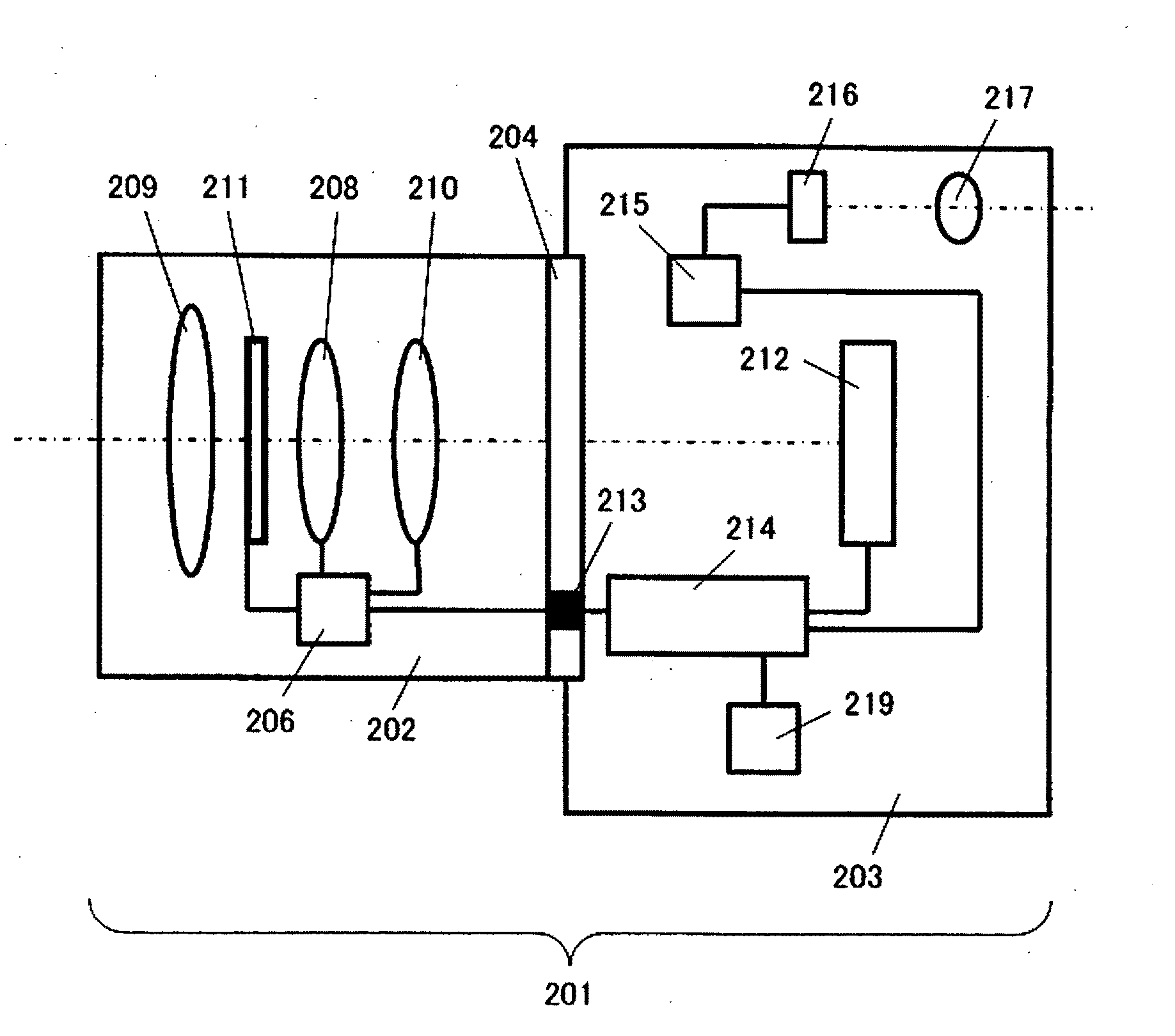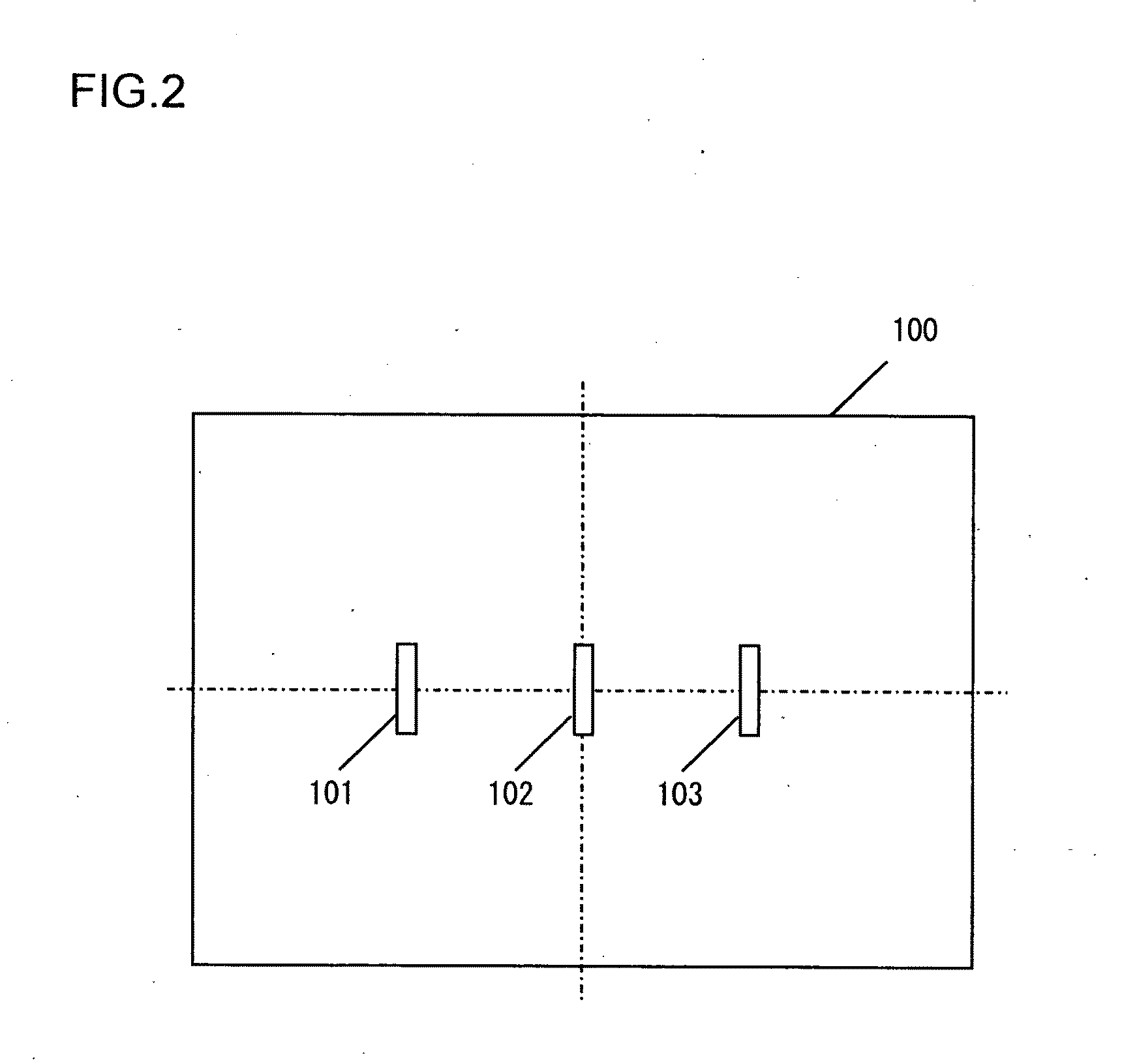Image sensor and image-capturing device
a technology of image sensor and image, which is applied in the direction of camera focusing arrangement, printer, instruments, etc., can solve the problems of inability to focus detection, dark image, and saturation of outputs of focus detection pixels
- Summary
- Abstract
- Description
- Claims
- Application Information
AI Technical Summary
Benefits of technology
Problems solved by technology
Method used
Image
Examples
Embodiment Construction
[0054]The image sensor and the image-capturing device achieved in an embodiment of the present invention are now described. FIG. 1 shows in a sectional side view the structure of a digital still camera used in conjunction with interchangeable lenses, which is equipped with the image sensor achieved in the embodiment. A digital still camera 201 in the embodiment includes an interchangeable lens 202 and a camera body 203. The interchangeable lens 202 among various interchangeable lenses is mounted at the camera body 203 via a mount unit 204.
[0055]The interchangeable lens 202 includes a lens 209, a zooming lens 208, a focusing lens 210 an aperture 211 and a lens drive control device 206. The lens drive control device 206, constituted with a microcomputer, a memory, a drive control circuit and the like, none shown engages in communication with a body drive control device 214 to be detailed later to transmit lens information to the body drive control device 214 and receive camera informa...
PUM
 Login to View More
Login to View More Abstract
Description
Claims
Application Information
 Login to View More
Login to View More - R&D
- Intellectual Property
- Life Sciences
- Materials
- Tech Scout
- Unparalleled Data Quality
- Higher Quality Content
- 60% Fewer Hallucinations
Browse by: Latest US Patents, China's latest patents, Technical Efficacy Thesaurus, Application Domain, Technology Topic, Popular Technical Reports.
© 2025 PatSnap. All rights reserved.Legal|Privacy policy|Modern Slavery Act Transparency Statement|Sitemap|About US| Contact US: help@patsnap.com



